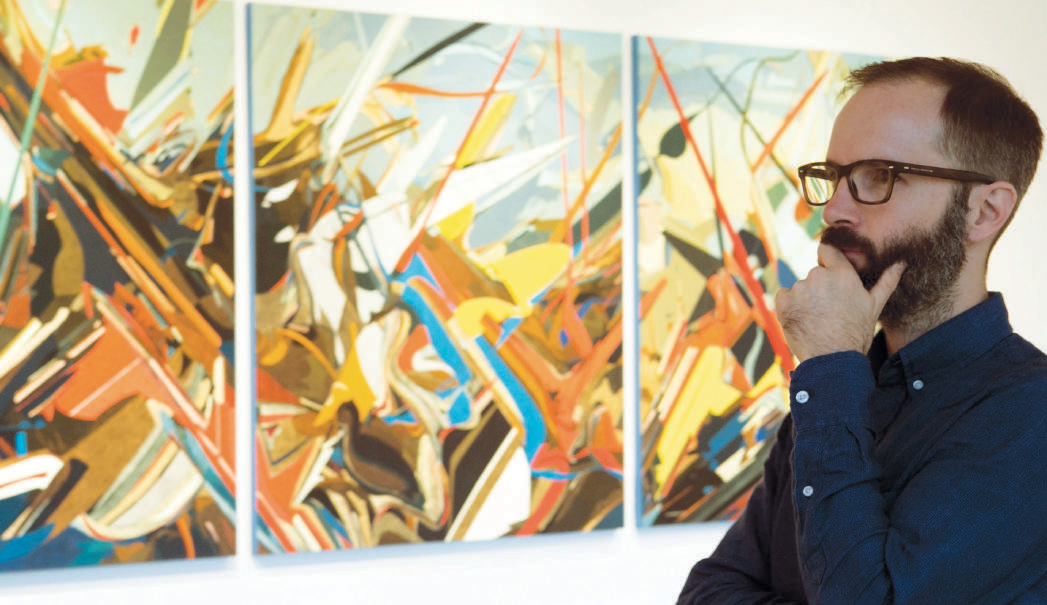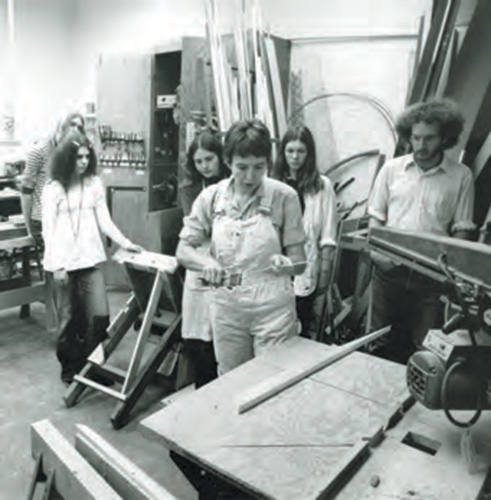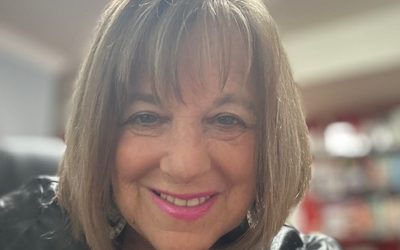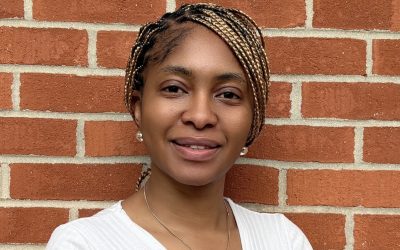The Contemporary Art Semester celebrates 50 years of creative connections.

Karen Mancinelli
Omar Rodriguez-Graham C’02 spent much of his boyhood in the Mexico City studio of his father, Oscar Rodriguez, absorbing the “visual language” of art and “making brown messes of paint.” Still, it wasn’t until he was a junior at Drew—and an erstwhile physics major—that he pivoted to art as a career. “To be honest, my art world education really did start in the New York Semester,” says the artist, whose paintings are held in private and public collections around the world.

Now in its 50th year, the New York Semester on Contemporary Art—like Drew’s other longstanding semesters on Wall Street, the United Nations and Communications and Media, as well as its brand-new semesters on Social Entrepreneurship and New York Theatre—immerses students in a real, thriving professional ecosystem. Required for art and art history majors, but open to all Drew juniors and seniors, this “very adventurous and nomadic program,” as director Kim Rhodes describes it, entails train rides into Manhattan and two or three visits a day at galleries, museums, auction houses and ateliers.
“We are constantly moving, constantly on our feet,” says Rhodes, a professor of art history. Students meet with artists “at the top of their careers, showing in blue-chip galleries” as well as with emerging artists closer to the students’ age, so “they might more easily see themselves stepping into their roles as working artists.”
The semester was the brainchild of the late Lee Hall, who, as head of the art department, enlisted famous friends, including Elaine de Kooning, to serve as program advisers. Rhodes estimates that 500 artists, gallerists and other art world luminaries have welcomed students into their workplaces since the program began in 1967.

The experience nurtures students’ artistic vision while providing insights into the nuts and bolts of making a living through creativity. It’s also “a street-up experience of the art world,” says retired art professor Sara Henry, who directed the semester for many of her 31 years at Drew. “Art is not only about art. It’s about our contemporary culture.” Artists, she says, learn to absorb the roles of empath, critic and visionary.
Networking counts, too, of course. One student landed a “super-competitive” internship in the restoration department of the Museum of Modern Art after one class visit, says Lee Arnold, an associate professor who alternates with Rhodes as director. The program “can really expose you to the practicalities of how a life as an artist is possible,” says the digital artist. “You grow up faster when you get that exposure.”
Rodriguez-Graham remembers the semester as being filled with lessons big and small, learned at the elbows of working artists like collagist John Powers. Among them: Don’t show up at a gallery just trying to sell your work. Make sure your studio’s not some dingy hovel and always have snacks or coffee to offer your guests. Be generous in every way you can, including about your own creative process.
Mostly, though, the semester showed Rodriguez-Graham that “it’s exciting to make art,” awakening an enthusiasm that still sustains him. “It really did change my life.”

Art Start
Working artists aren’t the only creative types with careers launched by the Contemporary Art semester. Also counted among its alumni are:
- Book and paper conservator, Walters Art Museum
- Acquisition marketing officer, Metropolitan Museum of Art
- Deputy chief of staff, Preservation Society of Newport County (Rhode Island)
- Gallery director, Franklin Parrasch Gallery
- Professor of visual arts, University of Southern Mississippi
- Research assistant in modern and contemporary art, Metropolitan Museum of Art
- Executive director, Demuth Museum and Lancaster Museum of Art
- Curator for young people, Tate Liverpool

